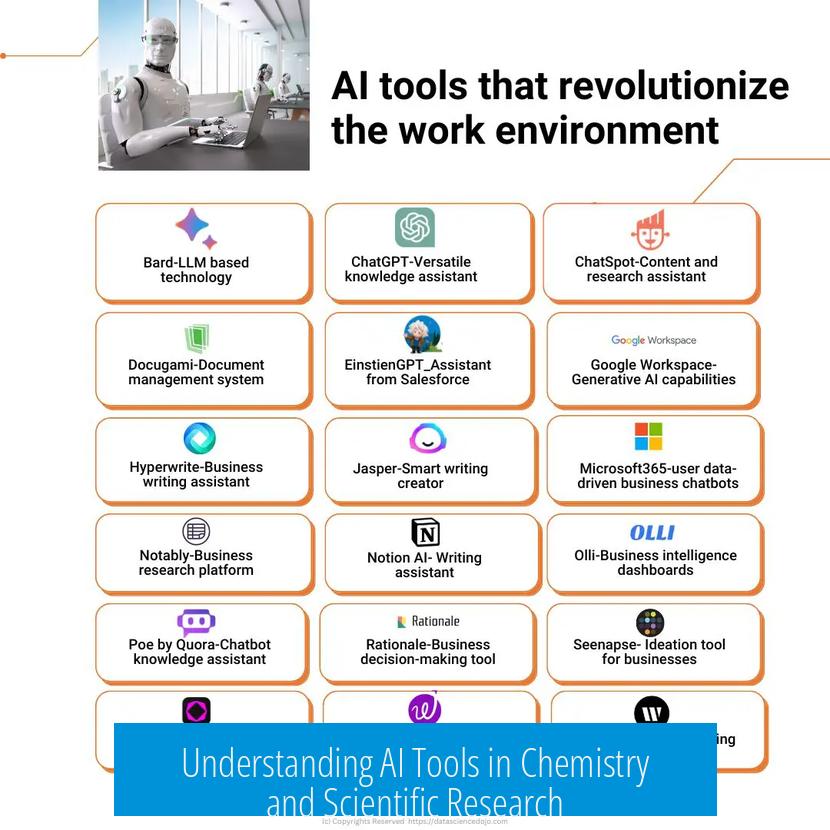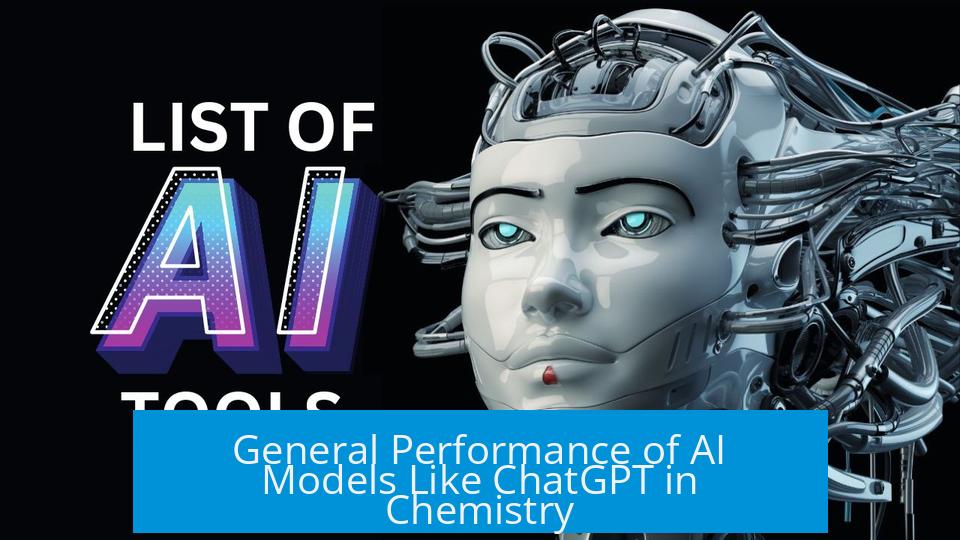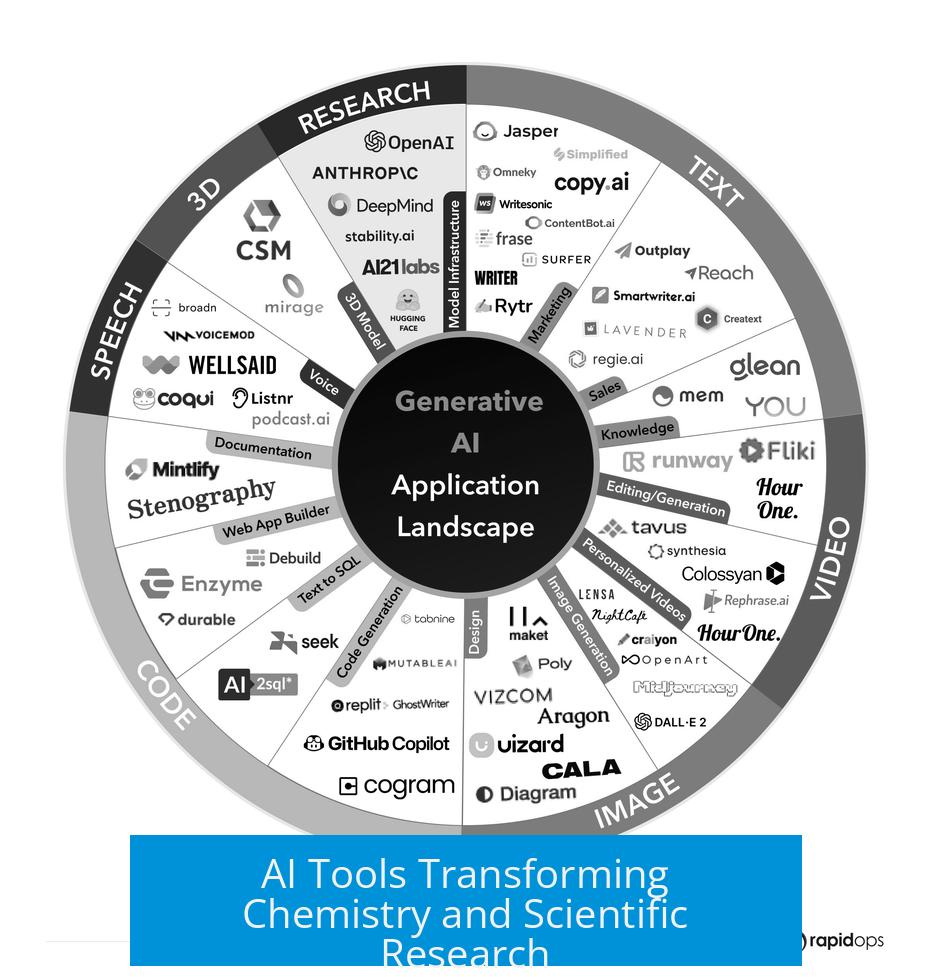Understanding AI Tools in Chemistry and Scientific Research

AI tools are increasingly shaping chemistry and scientific research. Their applications range from assisting with literature review to predicting molecular structures. However, their effectiveness varies widely depending on the domain and the quality of data involved.
General Performance of AI Models Like ChatGPT in Chemistry

Generic AI models such as ChatGPT show promise but face challenges in chemistry-specific tasks. Users report inaccuracies when referencing scientific literature, including fabricated journal names and irrelevant citations. This undermines trust in their outputs for precise scientific work.
These models continuously evolve. Early versions contained notable errors and lacked depth in handling complex, nuanced chemistry questions. While updates improve their potential, current versions are often insufficient for detailed chemical inquiries.
In practical use, interaction with these AI tools can be cumbersome. For example, users dislike repetitive manual input and find the response quality inconsistent. This limits their appeal in workflow-intensive laboratory environments.
Challenges Affecting AI Effectiveness in Chemistry
Chemical research presents unique hurdles for AI development. One of the primary issues is dataset bias. Most publications report positive results, neglecting negative or inconclusive outcomes. This uneven coverage skews AI learning and reduces predictive reliability.
A major problem is incomplete data. Chemistry encompasses many compounds, with key properties undetermined experimentally. Without comprehensive datasets, AI predictions remain uncertain and fail to generalize well.
Further complicating matters, many chemical datasets are limited in size. AI models typically require extensive, high-quality data to achieve accuracy. Chemistry has not yet supplied datasets on this scale, restricting AI tool advancement.
Leading AI Tools Excelling in Biochemistry
Among AI-driven tools, Alphafold2 stands out for biochemistry tasks. It can predict protein 3D structures from amino acid sequences with high accuracy. This represents a significant breakthrough in structural biology and drug design.
Alphafold2 leverages deep learning and massive protein databases. Despite its success, it has limitations. Predictions can be less reliable for novel proteins lacking homologous structures. Still, it is a powerful example of domain-specific AI in scientific research.
Specialized AI Tools and Emerging Capabilities
Customized AI tailored for chemistry shows promise. Some tools train on specific chemistry textbooks or datasets to answer focused questions. These models aim to combine broad chemical knowledge with targeted expertise.
AI applications also extend to experimental design and laboratory methodology. Researchers seek free AI resources that suggest chemical steps and optimize protocols. Such tools can improve efficiency and reduce trial-and-error time.
One example, AI Blaze, demonstrates practical utility. It can analyze graphs and images within chemistry assignments, enhancing data interpretation and report generation.
Chemy Lane: An AI Assistant Dedicated to Chemists
Mayfair Village, a French startup, developed Chemy Lane, an AI assistant specifically crafted for chemists. It aims to streamline literature search and data analysis with AI-powered tools tailored for chemical sciences.
Key Features of Chemy Lane
- Extensive Access: Connects to over 120 million scientific articles, providing a vast knowledge base.
- Relevance Scoring: Prioritizes the most pertinent documents using a proprietary algorithm.
- Recommendation Graphs: Visualizes relationships among research articles, authors, and concepts. This maps citation networks, co-authorship links, and thematic connections.
- Data Extraction: Automatically identifies compounds, experimental setups, and product characterizations from texts, minimizing manual work.
- Time and Cost Efficiency: Helps optimize research time and budget by highlighting relevant studies quickly.
Chemy Lane enables chemists to uncover influential studies at a glance. Its AI-powered analysis supports deeper insights into chemical literature, enabling more informed experimental planning and literature reviews.
Access to Chemy Lane is free for trials, and the developers actively seek user feedback to improve the platform. Interested researchers can sign up at https://app.chemylane.ai/signup and learn more at https://chemylane.ai/.
Summary of AI Tools in Chemistry
| Tool / Aspect | Description | Strength | Limitations |
|---|---|---|---|
| ChatGPT & generic GPT | General AI language models, handle wide tasks | Flexible, evolving rapidly | Errors in references, insufficient chemical nuance |
| Alphafold2 | 3D protein structure prediction | High accuracy in biochemistry | Limited to proteins, some prediction uncertainty |
| AI Blaze | Graph and image analysis in chemistry work | Practical for assignments and data visualization | Limited scope, mostly academic use |
| Chemy Lane | AI assistant focused on chemical literature and data | Vast dataset, relevance scoring, visualization | New product, requires user adoption and feedback |
Key Takeaways
- Generic AI tools currently lack reliability for detailed chemical questions. Dataset bias and incompleteness hinder accuracy.
- Alphafold2 is a standout AI tool for protein structure predictions in biochemistry, offering robust performance.
- Specialized AI applications like AI Blaze aid chemical data analysis, including graph and image interpretation.
- Custom-trained AI models on chemistry textbooks could improve interaction, but are still emerging.
- Chemy Lane is a specialized AI assistant tailored to chemists, providing extensive literature access, relevance scoring, and data extraction to enhance research productivity.
What limitations do general AI tools like ChatGPT face in chemistry?
ChatGPT struggles with chemistry’s detailed and nuanced questions. It often provides incorrect references and faces dataset biases. Currently, it is not reliable for specialized chemistry inquiries.
How does dataset bias affect AI tools in chemistry?
Most chemistry datasets lack negative results and have gaps in studied compounds. This limits AI performance because the models learn from incomplete and skewed information.
What makes Alphafold2 a leading AI tool in biochemistry?
Alphafold2 predicts 3D protein structures with high accuracy. It’s considered robust but still has limitations. Its success stems from intensive training on vast structural data.
How can AI tools assist in experimental design for chemistry?
Some AI tools help design experiments and outline chemical methodologies. For example, AI Blaze analyzes graphs and images, supporting data interpretation in lab assignments.
What special features does Chemy Lane offer for chemists?
Chemy Lane provides access to over 120 million scientific articles. It uses relevance scoring and recommendation graphs to highlight key studies. It also extracts compounds and experimental details automatically.
Is there potential for custom AI models trained on chemistry textbooks?
Yes, tailored AI models trained on specific chemistry texts could improve responses. Such specialized training might overcome current generic models’ knowledge gaps.





Leave a Comment